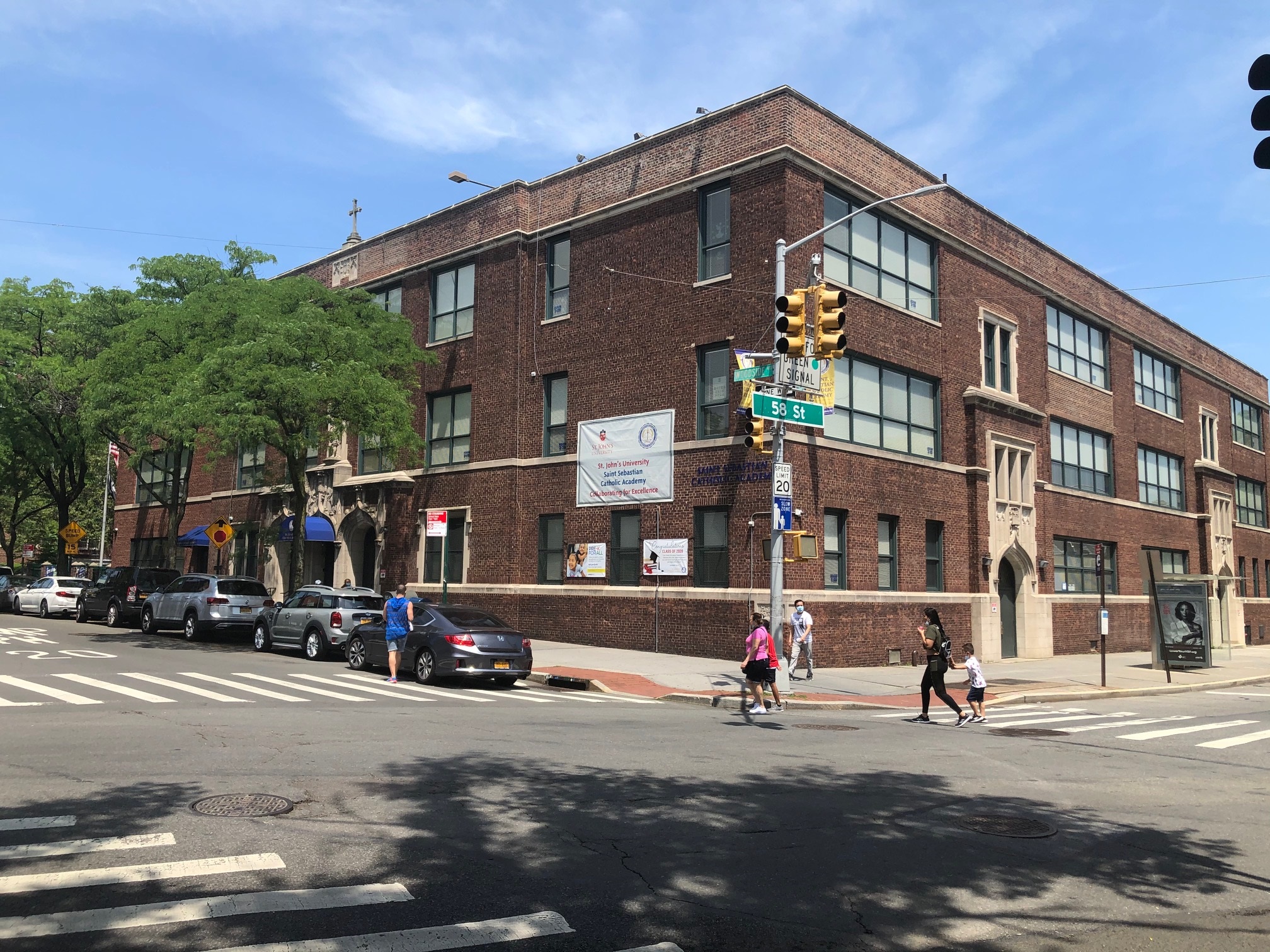
St. Sebastian Catholic Academy in Woodside (Photo: Queens Post)
Nov. 16, 2020 By Allie Griffin
Catholic schools in Queens and Brooklyn will remain open for in-person learning even if New York City public schools shutter due to a spike in COVID-19 cases, the Superintendent of Catholic Schools for Brooklyn and Queens announced Sunday.
Queens and Brooklyn Catholic schools will continue to provide in-person instruction five days a week, regardless as to whether Mayor Bill de Blasio shuts down in-person classes for public school students — something he warned could be just days away.
The Brooklyn Diocese — which also represents the borough of Queens — has had children in school buildings for more than two months without issue and will continue to do so, Superintendent Dr. Thomas Chadzutko said.
“For more than eight weeks, we have been able to maintain in-person learning for our students, mostly five days a week, and we intend to keep doing so going forward this school year,” Chadzutko said. “We know how critical it is for the development of our students to keep our schools open.”
The superintendent made the announcement as the city’s seven-day rolling average positivity rate nears the 3 percent threshold de Blasio set as the marker to close public schools.
The city’s seven-day positivity rate was at 2.77 percent on Saturday — a slight dip from a day earlier when it reach 2.94 percent, according to city Health Dept. data.
De Blasio has held firm on his promise to shutter in-person learning at public schools if the rate reaches 3 percent.
Chadzutko, meanwhile, said all 69 Catholic schools and academies across Queens and Brooklyn will stay open for their students.
“Our children want to be in the classroom and we want them to be there for as long as safely possible,” he said.
One Comment

They have to be careful with this. While whether to stay open or shut is a legit debate for any school. The first criteria should be safety and not,
1-Trying to get as many students in to make a buck and jeopardize safety.
2-Pushing religion onto students who are not Catholic. These non Catholic students are there for knowledge not to be introduced to a religious “drug”.
3-Having strict separation of students and religious faculty members since the church still hasn’t come to terms as being one of the chief protectors and conduits of child molesters.